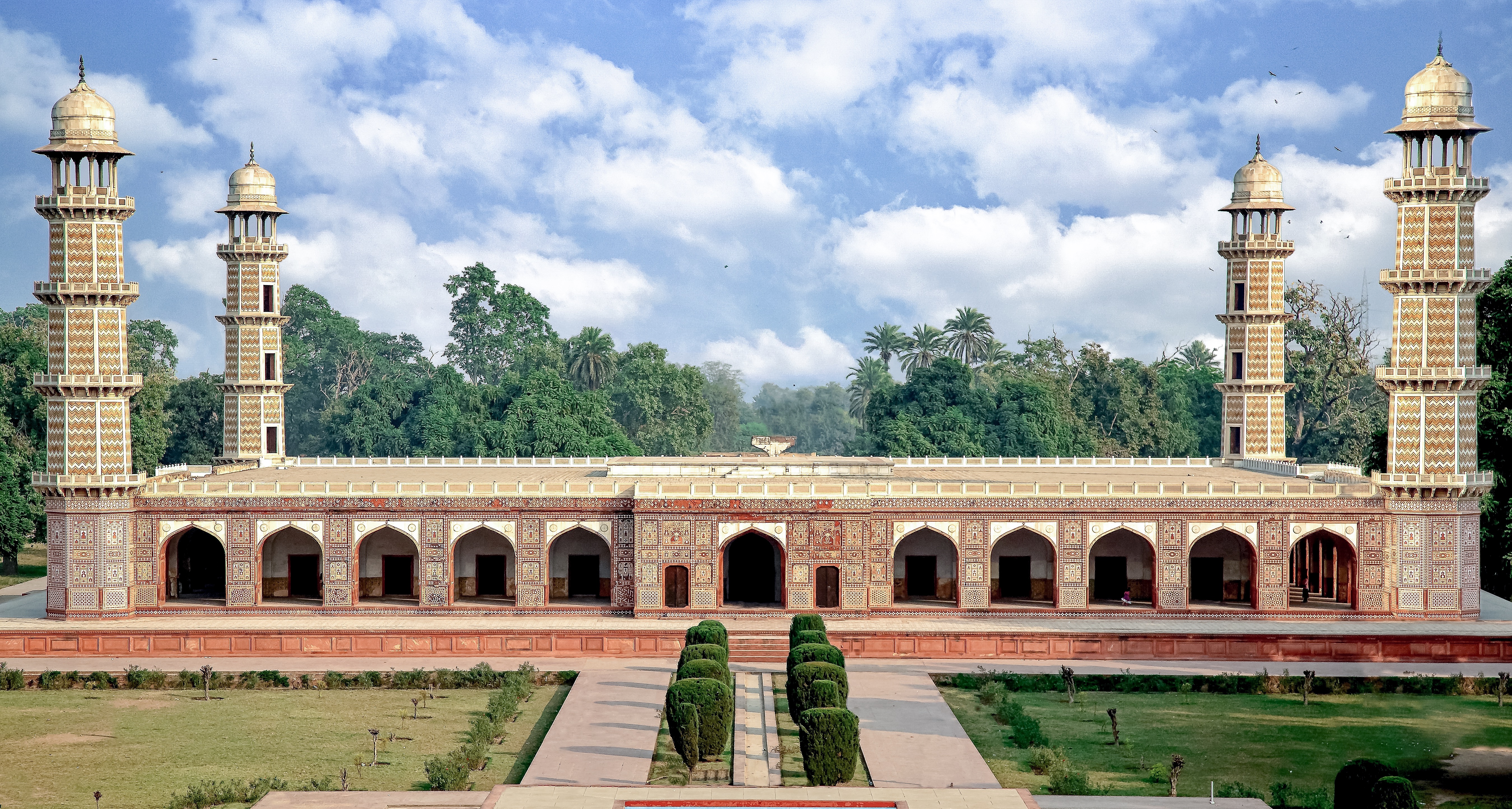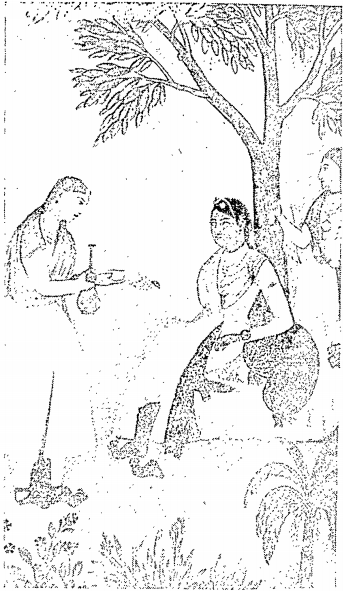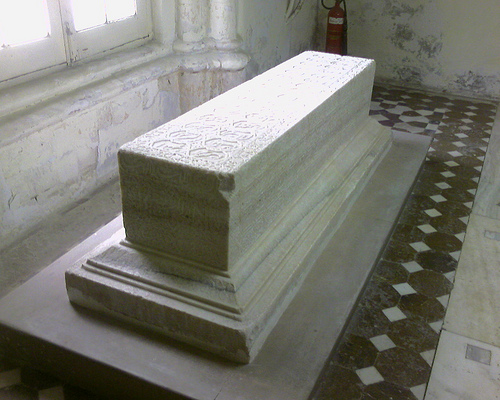|
Jahangir
Nur-ud-Din Muhammad Salim (30 August 1569 – 28 October 1627), known by his imperial name Jahangir (; ), was the fourth Mughal Emperor, who ruled from 1605 until he died in 1627. He was named after the Indian Sufi saint, Salim Chishti. Early life Prince Salim was the third son born to Akbar and his favourite Queen Consort, Mariam-uz-Zamani in Fatehpur Sikri on 30 August 1569. He had two elder brothers, Hassan Mirza and Hussain Mirza, born as twins to his parents in 1564, both of whom died in infancy. Since these children had died in infancy, Akbar sought the blessing of holy men for an heir-apparent to his empire. When Akbar was informed of the news that his chief Hindu wife was expecting a child, an order was passed for the establishment of a royal palace in Sikri near the lodgings of Shaikh Salim Chisti, where the Empress could enjoy the repose being in the vicinity of the revered saint. Mariam was shifted to the palace established there and during her pregnancy, Akba ... [...More Info...] [...Related Items...] OR: [Wikipedia] [Google] [Baidu] |
Shah Jahan
Shihab-ud-Din Muhammad Khurram (5 January 1592 – 22 January 1666), better known by his regnal name Shah Jahan I (; ), was the fifth emperor of the Mughal Empire, reigning from January 1628 until July 1658. Under his emperorship, the Mughals reached the peak of their architectural achievements and cultural glory. The third son of Jahangir (), Shah Jahan participated in the military campaigns against the Rajputs of Mewar and the Lodis of Deccan. After Jahangir's death in October 1627, Shah Jahan defeated his youngest brother Shahryar Mirza and crowned himself emperor in the Agra Fort. In addition to Shahryar, Shah Jahan executed most of his rival claimants to the throne. He commissioned many monuments, including the Red Fort, Shah Jahan Mosque and the Taj Mahal, where his favorite wife Mumtaz Mahal is entombed. In foreign affairs, Shah Jahan presided over the aggressive campaigns against the Deccan Sultanates, the conflicts with the Portuguese, and the wars with S ... [...More Info...] [...Related Items...] OR: [Wikipedia] [Google] [Baidu] |
Tomb Of Jahangir
The Tomb of Jahangir ( ur, ) is a 17th-century mausoleum built for the Mughal Emperor Jahangir. The mausoleum dates from 1637, and is located in Shahdara Bagh near city of Lahore, Pakistan, along the banks of the Ravi River. The site is famous for its interiors that are extensively embellished with frescoes and marble, and its exterior that is richly decorated with '' pietra dura''. The tomb, along with the adjacent Akbari Sarai and the Tomb of Asif Khan, are part of an ensemble currently on the tentative list for UNESCO World Heritage status. Location The tomb is located in Shahdara Bagh, northwest of the Walled City of Lahore. The tomb is located across the River Ravi from Lahore, in what was a rural area known for its numerous pleasure gardens. The tomb is located in Jahangir's pleasure garden, the ''Dilkusha'' Garden, which had been laid out in 1557. The Tomb of Asif Khan, built-in 1645, and the Akbari Sarai, built-in 1637, are located immediately west of Jahangir's tomb ... [...More Info...] [...Related Items...] OR: [Wikipedia] [Google] [Baidu] |
Khusrau Mirza
Khusrau Mirza (16 August 1587 – 26 January 1622) was the eldest son of the Mughal Emperor Jahangir and his first wife, Shah Begum. He was beloved of his grandfather, Mughal Emperor Akbar and his grandmother, Mariam-uz-Zamani. The young prince displayed exceptional skills and wisdom and had the privilege to be groomed by the Mughal Emperor Akbar himself for the throne of the Mughal Empire. He turned out to be the most capable and qualified son of Jahangir but was befallen by an unfortunate destiny. Being Jahangir's eldest son, he was the heir-apparent to his father but Jahangir favoured his son Khurram Mirza for the animosity he held for Khusrau. The charismatic prince was beloved of the common people widely known for his valour, secularism and battlefield talent, and was free of all vices of the people of his age. It is noted that Akbar use to see himself in Khusrau, as a very brave, capable, talented battlefield commander and charismatic person. Khusrau Mirza had powerf ... [...More Info...] [...Related Items...] OR: [Wikipedia] [Google] [Baidu] |
Nur Jahan
Nur Jahan, born Mehr-un-Nissa P ersian: نورجهان (; – 18 December 1645) was the wife and chief consort of the Mughal emperor Jahangir from 1620 until his death in 1627. Nur Jahan was born Mehr-un-Nissa, as the daughter of a Mirza Ghiyas Beg, who served under Jahangir's father, Emperor Akbar. Nur Jahan was the most powerful empress in the Mughal Empire. More decisive and proactive than her husband, she is considered by historians to have been the real power behind the throne for more than a decade. Nur Jahan was granted certain honours and privileges which were never enjoyed by any Mughal empress before or after like having coinage struck in her name. Jahangir's addiction to alcohol and opium made it easier for Nur Jahan to exert her influence over him and exercise power. She was granted the privilege to issue farmāns (sovereign mandates). The only other empress to command such devotion from her husband was Mumtaz Mahal, for whom the Taj Mahal was built by Emperor ... [...More Info...] [...Related Items...] OR: [Wikipedia] [Google] [Baidu] |
Parviz Mirza
Parviz Mirza (31 October 1589 – 28 October 1626) was the second son of Mughal emperor Jahangir from his wife, Sahib Jamal. His daughter, Nadira Banu Begum, later became the wife of Dara Shikoh. Early life Born on 31 October 1589, Parviz was the son of Jahangir and Zayn Khan Koka's cousin, Sahib Jamal. Zayn Khan koka, was the son of one of Akbar's Amahs. As the Emperor's second son, he was 2 years older than Khurram, and 2 years younger than Khussrau. In peaceful times, before his brother's rebellion, he was active and enjoyed polo. Polo was a popular sport among the Mughal court, evidenced by a miniature showing the typical 4 player team consisting of Jahangir, Parviz, Khurram, and Asaf Khan. He supported his father's war of succession. Following the failed revolt, and the death of Jahangir's grandmother Miriam Makani, Parviz accompanied his father back to Agra in 1604. This was in attempt to reconcile with Akbar, and his father was severely reprimanded for his trea ... [...More Info...] [...Related Items...] OR: [Wikipedia] [Google] [Baidu] |
Akbar
Abu'l-Fath Jalal-ud-din Muhammad Akbar (25 October 1542 – 27 October 1605), popularly known as Akbar the Great ( fa, ), and also as Akbar I (), was the third Mughal emperor, who reigned from 1556 to 1605. Akbar succeeded his father, Humayun, under a regent, Bairam Khan, who helped the young emperor expand and consolidate Mughal domains in India. A strong personality and a successful general, Akbar gradually enlarged the Mughal Empire to include much of the Indian subcontinent. His power and influence, however, extended over the entire subcontinent because of Mughal military, political, cultural, and economic dominance. To unify the vast Mughal state, Akbar established a centralised system of administration throughout his empire and adopted a policy of conciliating conquered rulers through marriage and diplomacy. To preserve peace and order in a religiously and culturally diverse empire, he adopted policies that won him the support of his non-Muslim subjects. Eschewing tr ... [...More Info...] [...Related Items...] OR: [Wikipedia] [Google] [Baidu] |
Jagat Gosain
Manavati Bai, also spelled Manvati Bai, (13 May 1573 – 8 April 1619), better known by her title, Jagat Gosain (), was the second wife and the empress consort of the fourth Mughal emperor Jahangir and the mother of his successor, Shah Jahan. She is also known as Mani Bai, Manmati, Jodh Bai (), Findly, p. 396 Taj Bibi () and was also given the posthumous title of Bilqis Makani (). She was also wrongly referred to as Balmati Begum by Manrique. She should not be confused with her mother-in-law, Mariam-uz-Zamani, who was erroneously called as "Jodha Bai" by European historians since any daughter belonging to the Jodhpur region could be called Jodha Bai or daughter of Jodhpur region. By birth, she was a Rajput princess of Marwar (present-day Jodhpur) and was the daughter of Raja Udai Singh (popularly known as ''Mota Raja''), the Rathore ruler of Marwar and the full-sister of Sawai Raja Sur Singh, another Rathore ruler of Marwar and Maharaja Kishan Singh, founder of Kishangarh ... [...More Info...] [...Related Items...] OR: [Wikipedia] [Google] [Baidu] |
Mughal Empire
The Mughal Empire was an early-modern empire that controlled much of South Asia between the 16th and 19th centuries. Quote: "Although the first two Timurid emperors and many of their noblemen were recent migrants to the subcontinent, the dynasty and the empire itself became indisputably Indian. The interests and futures of all concerned were in India, not in ancestral homelands in the Middle East or Central Asia. Furthermore, the Mughal empire emerged from the Indian historical experience. It was the end product of a millennium of Muslim conquest, colonization, and state-building in the Indian subcontinent." For some two hundred years, the empire stretched from the outer fringes of the Indus river basin in the west, northern Afghanistan in the northwest, and Kashmir in the north, to the highlands of present-day Assam and Bangladesh in the east, and the uplands of the Deccan Plateau in South India. Quote: "The realm so defined and governed was a vast territory of some , rang ... [...More Info...] [...Related Items...] OR: [Wikipedia] [Google] [Baidu] |
Shah Begum (wife Of Jahangir)
Shah Begum (); ( 1570 – 5 May 1605) was the first wife and chief consort of Prince Salim (later Emperor Jahangir). She was known as Zan-i-Kalan being the first wife of Salim. She was a Rajput princess by birth and committed suicide shortly before the succession of her husband to the royal throne. She was the mother of the eldest daughter and son of Prince Salim, Sultan-un-Nissa Begum and Khusrau Mirza. Family Manbhawati Bai, known popularly as Man Bai, was the daughter of Raja Bhagwant Das, the ruler of Amer. She was the granddaughter of Raja Bharmal and sister of Raja Man Singh and Raja Madho Singh. Furthermore, she was also a niece of Mariam-uz-Zamani who eventually became her mother-in-law as well. This would make her a maternal cousin of her husband, Prince Salim. Her marriage to Prince Salim was arranged by her aunt and mother-in-law Empress Mariam-uz-Zamani. Marriage At the age of fifteen, Salim was betrothed to his cousin, Man Bai. Rajkumari Man Bai. This marriage ... [...More Info...] [...Related Items...] OR: [Wikipedia] [Google] [Baidu] |
Sahib Jamal
Sahib Jamal ( fa, صاحب جمال; died 25 June 1599) was the wife of Prince Salim, the future Mughal emperor Jahangir and the mother of his second son, Prince Parviz. Family Sahib Jamal was of Turkish origin and was the daughter of a respected Muslim religious personality, Khwaja Hasan of Herat, making her the cousin of Zain Khan Koka, who was a leading official in the Mugal Empire under Akbar, including serving for a time as governor of Kabul. Her father, Khwaja Hasan, was known widely for his scholarship and studies in the techniques of warfare. Akbar held him in high esteem, and often discussed with him the spiritual problems that often agitated his mind. Zain Khan's daughter, Khas Mahal was also married to Jahangir. Sahib Jamal was a beautiful, highly cultured and well educated woman, who was fully conversant with the rules and etiquettes of the palace. Marriage Salim married her on 1586. Upon her marriage, she was given the title "Sahib Jamal", which literally ... [...More Info...] [...Related Items...] OR: [Wikipedia] [Google] [Baidu] |
Khas Mahal
Khas Mahal ( fa, خاص محل), meaning "The exquisite one of the palace", was one of the chief wives of the Mughal emperor Jahangir. Family Khas Mahal was the daughter of Zain Khan Koka. Zain Khan was the son of Khawajah Maqsud of Herat and Pija Jan Anga, foster-mother of Emperor Akbar. Khan's paternal uncle, Khawajah Hassan's daughter, Sahib Jamal had been married to Jahangir, and was the mother of his son Prince Parviz Mirza. Khas Mahal had two brothers, named Zafar Khan and Mughal Khan. The former served under Akbar and Jahangir, and died on 7 March 1622. The latter served under Jahangir and his son Shah Jahan, and died on 1 July 1657. A sister of Khas Mahal was married to Mirza Anwar, a son of Mirza Aziz Koka, Akbar's foster-brother. Marriage In 1596 Prince Salim (future Emperor Jahangir) became violently enamored of her and meditated on marrying her. Akbar was displeased at the impropriety. The cause of Akbar's objection was Sahib Jamal who had already been married to ... [...More Info...] [...Related Items...] OR: [Wikipedia] [Google] [Baidu] |
Saliha Banu Begum
Saliha Banu Begum (died 10 June 1620) was Empress consort of the Mughal Empire as the wife of Emperor Jahangir. She was also known as the Padshah Banu Begum or the Padshah Mahal. Family Saliha Banu Begum was the daughter of Qaim Khan, and came from a well placed family in the government as her brother, Abdur Rahim (titled Tarbiyat Khan), was said by Jahangir to be "of the hereditary houseborn ones of this Court." She was the granddaughter of Muqim Khan, the son of Shuja'at Khan from Akbar's time. Marriage Jahangir married her in 1608, in the third year of his reign. As a consequence, her brother Abdur Rahim's position greatly advanced. He was awarded with the title of Tarbiyat Khan. His son named Miyan Joh, whom Saliha had taken for her son, was killed at the banks of river Jhelum by Mahabat Khan when the latter behaved insolently towards Jahangir, in 1626. For much of Jahangir's reign, she was the Padishah Banu ("The Sovereign Lady"), also called Padishah Mahal ("Sovereign o ... [...More Info...] [...Related Items...] OR: [Wikipedia] [Google] [Baidu] |







